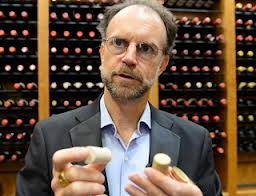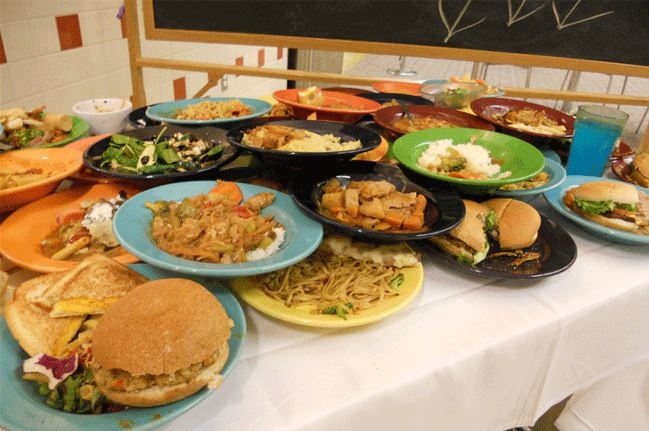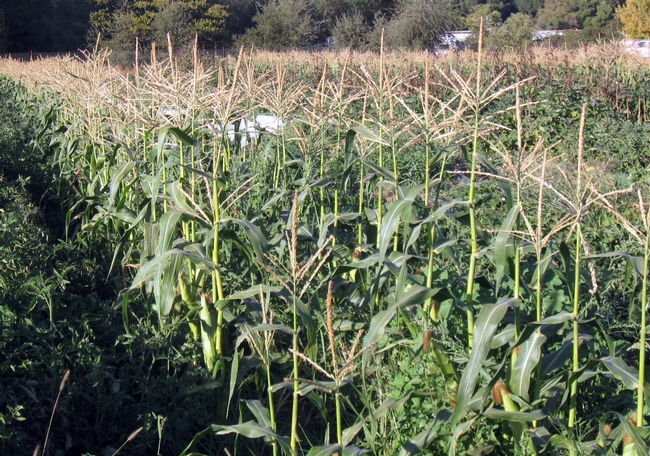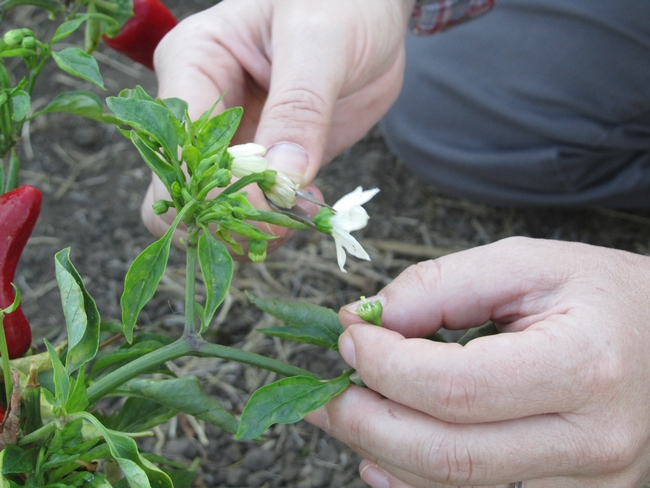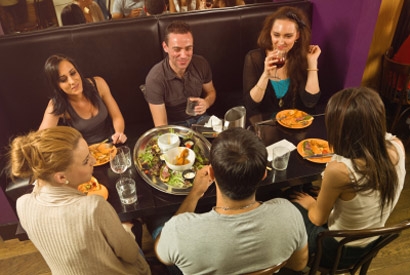UC Food Blog
Farewell corks? Screw caps may outshine corks in wine quality
While many of us cherish the mystique of popping a wine cork, screw caps are becoming more commonplace in the wine industry. Half a century ago, screw caps were associated with cheap rotgut wine, but now they have replaced corks in many premium wines and at many of the world’s best wineries.
Wine bottles are sealed primarily in three ways — natural corks, synthetic corks or screw caps. All have their advantages and disadvantages, and most certainly their proponents and opponents. While synthetic corks never gained much of a foothold in the wine industry, screw caps are being studied more frequently for their efficacy and quality.
While screw caps were originally thought to be airtight, resulting in the unpleasant aroma of hydrogen sulfide inside some sealed wine bottles, screw caps have been developed with different levels of permeability. Most aluminum Stelvin caps are lined with a polyvinylidene chloride–tin foil combination (Saran-Tin), or a polyvinylidene chloride–polyethylene mix (Saranex); each yielding different permeabilities, and chemical and taste profiles in the wine.
Research is weighing the value of screw caps on wine quality and consumers’ ability to taste differences in wine bottled with a cork or a screw cap.
A new UC Davis study spearheaded by wine chemist Andrew Waterhouse, professor in the Department of Viticulture and Enology, is examining Sauvignon Blanc wine quality during aging, and consumers’ ability to taste differences such as oxidation in wine capped with natural cork, synthetic cork or screw caps. The UC Davis research team includes John Boone, a radiologist, and David Fyhrie, a biomedical engineer — both professors in the UC Davis School of Medicine — who will work with Waterhouse to analyze the corks, the wine color and oxidation of the wine.
The study, which will be completed next year, is not touted to give a definitive answer to the best type of wine closure, but it will, according to Waterhouse, give winemakers reliable information on which to judge the type of closure that works best on their wines. (Watch Waterhouse explain the study in a video.)
An earlier study at Oregon State University, and reported in ScienceNews, said that consumers could not discern a difference in Pinot Noir and Chardonnay wines capped with natural corks or screw caps.
Perhaps what merits future study is the type of linings in screw caps. As screw caps continue to gain a foothold in the wine industry, it’s reasonable to assume that additional research on cap linings will produce additional options for winemakers, resulting in high-quality wines with greater longevity.
Based on research studies and wine experts’ judgments, here are some advantages and disadvantages of different types of wine closures:
Natural Corks:
- Traditionalists claim that "real" corks allow healthy gas exchange for flavorful wine
- Some claim that good sources of natural cork are dwindling
- Not all natural corks are alike, resulting in variable cork properties
- Higher chance of “corked” wines and trichloranisole (TCA) taint
Synthetic Corks:
- Considered expensive and unpopular with consumers
- Many synthetic corks let too much air into the wine bottle
- They’re often difficult to remove from the bottle, and to re-cork the bottle
Screw Caps:
- Less chance that wines will be “corked,” and probably fewer tainted wines
- Some say that air-tight screw caps are “suffocating” to wines
Read more:
- Corks and screw caps? Can wine consumers taste the variation? UC Davis study
- Wine corks are going: the screwcaps are winning. HubPages
- Cap or cork, it’s the wine that matters most. ScienceNews
- Great wines under cork and screw cap. Forbes
- Corks vs. screwcaps. Total Wine & More
- Chateau Margaux corks a problem with a screw cap. The Wall Street Journal
- 7. Cork vs. screw cap: what’s all the fuss about? Imbibe Liquid Culture
Leave no food behind
Everyone was dusty, tired and ready to relax. Pizza dinner had just ended on the third night of outdoor education in the Santa Cruz Mountains, but it wasn’t quite time to go.
A counselor brought out a bucket containing all of the food leftovers from the plates of the sixth graders, their teachers, naturalists and parent chaperones. It was empty. The crowd cheered: The group had met its goal of zero waste.
The camp made me think about how much food we throw away on a regular basis. Americans waste almost 27 percent of all the food produced in the United States each year. That’s the equivalent of around one pound of food a day for each American.
How can we do better? At the camp, they eat when everyone is hungry, serve small portions and choose items such as pizza and salad that lend themselves to minimal leftovers. What are college campuses doing when faced with the challenge of all-you-can-eat buffets? Actually, quite a lot.
The University of California has been a sustainability leader, working toward an ambitious goal of zero waste by 2020. Take for example UC Davis, home to the nation’s “Coolest School,” an award-winning eco-friendly football stadium, a student farm and robust waste reduction efforts in dining services.
UC Davis Dining Services has reduced plate waste by more than 40 percent in three years, going from 3.6 ounces per person to less than 2 ounces. Danielle Lee, sustainability manager with UC Davis Dining Services, explained some of the key steps that led to the change:
- Trayless dining: Without trays, students only take as much food as they can grab, instead of piling on more than they can consume.
- Try-a-taste program: Students can sample new entrees to see if they like them, instead of getting a big portion of something they may not want to eat.
- Bunless dining: Staff built a tower of leftover buns from hamburgers, turkey burgers and veggie burgers, encouraging students to ask for burgers without buns.
- Waste audits: What’s bigger than a bun tower? The waste buffet spread on top of tables during the waste audits each fall and spring. Students are so surprised by how much waste is generated that they improve their eating habits, Lee said.
- Feedback from staff and students: Dining services meets regularly with staff to review menus, track portions and reduce waste. Also, it seeks student comments and consults with a board of student representatives – among the changes, offering smaller bowls for Mongolian barbecue, limiting leftovers.
With UC Davis dining serving 1.8 million meals a year, these actions add up.
“You’re saving quite a bit of money, energy and resources,” Lee said.
For the food that is uneaten, much of it is composted: 550 tons of organic waste a year, with some turned into renewable energy at a biogas facility that uses UC Davis technology.
Overall, UC Davis diverts almost 75 percent of all its waste – the UC target for this year – from the landfill. To get to the next level, UC Davis will need to improve its recycling of plastics, Lee said.
UC’s efforts to increase sustainability are worth it, said Lee, who began advocating for waste reduction as a UC Davis student, coordinating with campus cafes to compost their coffee grounds.
“I’ve been able to continue the work,” Lee said. “This is my dream job.”
It’s a reminder to think about what you need the next time you dine or shop for groceries. Watch not only what you eat but how much you eat. Be judicious. Serve appropriate portions. Waste not, want not.
Corn smut for dinner tonight...yum!
I often look at foods and wonder, “Who’s idea was it to eat this?” Some foods just don’t look like they should be food, including huitlacoche.
Huitlacoche is corn smut — a fungus that often infects sweet corn during times of drought. It enters the plant through the ovaries, and replaces the corn kernels with large tumor-like spores that look like really ugly mushrooms. Farmers in the U.S. have spent millions of dollars trying to eradicate the infection. The UC Davis Student Farm has a bad case of corn smut this year, and it’s threatening to ruin their entire crop.
But it may not be such a bad thing. Often known as the Mexican truffle, huitlacoche is considered a delicacy in Mexico. In fact, the Aztecs used to purposely scratch their corn plant with a knife to encourage the growth of huitlacoche.
According to this article in the Huffington Post, huitlacoche may actually be more nutritious than the corn it infected. It’s full of protein, minerals, and other nutritious compounds that don’t always exist in the corn itself. It’s also more valuable than the corn itself — in a study conducted by University of Wisconsin, an ear of huitlacoche sold for approximately $1.20 and cost about 41 cents to produce. An ear of corn without the infection cost less than 10 cents to produce, but sold for only a few cents more.
Although it sells for approximately $20 per pound in Napa Valley, few American growers have converted to growing the fungus. Most American growers lack the resources needed for inoculation, and huitlacoche is highly perishable; however, demand is slowly increasing and several American growers have started growing the specialized crop.
Huitlacoche is typically found in tacos, quesadillas, tamales, and other traditional Mexican cuisine. In the U.S., it’s mostly found canned in Mexican grocery stores, and can occasionally be found in high-end restaurants or traditional Mexican restaurants. Want to give it a try? For suggestions of restaurants that serve the delicacy in the San Francisco Bay Area, read this blog at chowhound.com. Or if you’re really brave and want to cook it yourself, try including it as a side dish or making huitlacoche soup.
I was out at the UC Davis Student Farm this weekend looking for huitlacoche, and sure enough, about one in every 10 ears of corn had it. Though it could be profitable, the student farm has no intention of selling it this time around.
“We just don’t have the resources to harvest it, and we don’t have the market here to make it profitable” said Edwina King, the Market Garden Coordinator at the UCD Student Farm.
But that won’t stop some locals from getting excited about the crop. Jessica Myles, a UC Davis graduate student who helped me identify the fungus at the student farm, harvested some herself.
“I’m going to go home and cook it up and freeze it, I’m so excited!”
She’s promised to make me huitlacoche tamales. As curious as I am about trying it, I may have to close my eyes while I eat it. Stay tuned.
Captivating capsicums: Igniting interest in plant breeding
Peppers in an array of colors, shapes, sizes and flavors grown at the UC Davis Student Farm are igniting interest in plant breeding and the astonishing botanical diversity of the Capsicum genus, to which all peppers belong.
“Fifty-two varieties is a wonderful candyland for me, but it’s just a few of the many varieties in the world,” said graduate student Ildi Carlisle-Cummins, who works on a partnership project between the Student Farm and researcher Allen Van Deynze.
Funded by the U.S. Department of Agriculture, the pepper project is meant to educate students and the general public about the importance of plant diversity and career opportunities in plant breading.
“Peppers make it easy because they leave such a strong impression,” said Carlisle-Cummins, who has been organizing field trips for students from second grade and up. “Students become fascinated with plant diversity and variety, and want to know more about molding and shaping it.”
While Carlisle-Cummins’ personal research is focused on sustainable food systems, she is delighted to explain cross pollination to show students how to develop new varieties of plants.
Plant breeding allows humans to select for certain desired traits, such as flavor, yield and pest resistance.
Agricultural has always been a dynamic, innovative industry, Carlisle-Cummins points out. Peppers originated in South America, in the region around modern day Bolivia. Over the centuries, a few species were taken by explorers all over the world. Farmers developed a kaleidoscopic array of subvarieties to suit their needs. Today, researchers are focused on developing new varieties to address new issues, like climate change.
“The world is changing,” Carlisle-Cummins said. “It’s pretty critical we have crops that can survive new places and climates and continue to feed us. It’s critical that we continue to inspire people to go into these fields of research so we have people who know how to work with plants, so they adapt along with a changing world.”
The chile pepper program continues throughout the year. Contact Ildi Carlisle-Cummins at icarlislecummins@ucdavis.edu to find out about upcoming events.
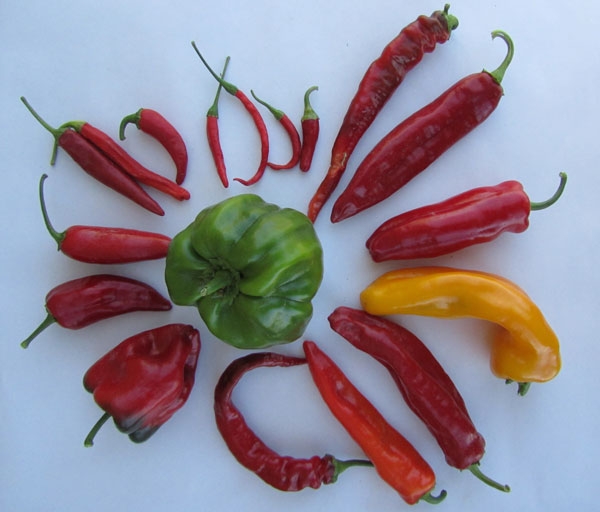
An array of peppers.
Yelp ratings give restaurants a boost
Every wonder whether those crowd-sourced reviews online actually make a difference in a business’s bottom line? For restaurants, the answer is an unequivocal yes, according to a new study by UC Berkeley economists. Researchers analyzed restaurant ratings on Yelp.com and found that, on a scale of 1 to 5 stars, a half-star rating increase translates into a 19 percent greater likelihood that an eatery’s seats will be full during peak dining times.
“This is the first study to link online consumer reviews with the popularity of restaurants,” said study lead author Michael Anderson, assistant professor in the Department of Agricultural and Resource Economics at UC Berkeley. “We show that social media sites and forums play an increasingly important role in how consumers judge the quality of goods and services.”
Anderson and study co-author Jeremy Magruder, also an assistant professor the Department of Agricultural and Resource Economics, analyzed 148,000 Yelp reviews for 328 restaurants in the San Francisco Bay Area. Their results, published this summer in the Economic Journal, did not take into account either price or service; they analyzed only the impact of positive Yelp reviews.
The study found that moving from 3 stars to 3.5 stars increases a restaurant’s chance of selling out during prime dining times from 13 percent to 34 percent, and that moving from 3.5 stars to 4 stars increases the chance of selling out during prime dining times by another 19 percentage points. These changes occur even though restaurant quality remains constant.
Not surprisingly, the economists found that crowd-sourced reviews have a bigger impact when there is a lack of alternative information available by which to judge a restaurant’s quality. They also found that restaurants rated in popular guidebooks or newspaper rankings did not see a statistically significant effect from the Yelp rankings.
“If a restaurant has a Michelin star or it appears in the San Francisco Chronicle’s list of Top 100 Restaurants in the Bay Area, the Yelp star becomes irrelevant,” said Magruder. “Those restaurants are relatively famous, and consumers already know them. For restaurants that were not on those established reviews, we actually saw a 27 percent greater likelihood in filled seats during peak dining times with a half-star rating increase on Yelp.”
Could these findings lead to potential manipulation of the ranking system for profit?
“We considered that possibility, and our study indicates that so far, such manipulation is under control,” said Anderson. “There are enough reviews available that it would be difficult to generate enough fake positive reviews to drown out the bad ones. There is also an element of self-policing since customers going to a restaurant on the basis of a good fake review only to be disappointed could submit a bad review. It could be hard for the business owner to sustain the false positives over time.”
The researchers are now looking to expand their analysis beyond eateries to sites such as Amazon.com, Tripadvisor.com and Netflix.com.


